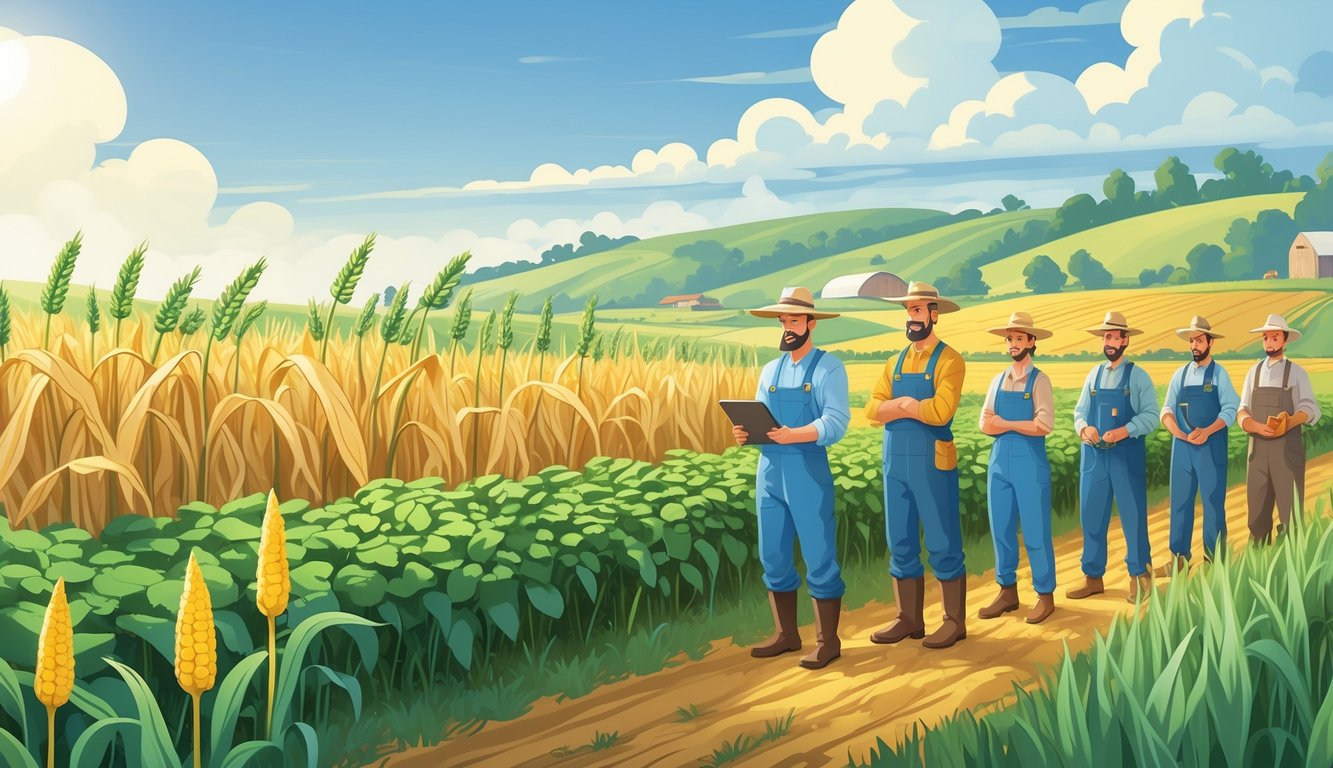
Roundup Ready Soybeans
People act like Roundup Ready soybeans are just about weed control. Sure, glyphosate resistance is the headline, but there’s a sneaky bonus: the improved genetics often mean fewer late-season diseases. Not as exciting, but real.
Researchers keep shoving trial data at me—these soybeans don’t need as much fungicide when things get rough. There’s still all the noise about resistance stacking, rotations, and, honestly, what is a “normal” spring anymore? But growers admit these beans just yield more reliably, year after year. That matters when prices tank.
I’ve seen fields near the Mississippi Delta—Roundup Ready beans look healthy, while the conventional ones next door are a mess. Coincidence? Maybe. Or maybe genetic resistance is just quieter than we give it credit for.
Other Resistant Varieties
Some crops just slip under the radar. Disease-resistant tomatoes? All those cryptic codes (F1, VFN, TSWV) and nobody but seed reps knows what they mean. Veggie growers roll their eyes at the hype, but when they use resistant types and grafted rootstocks, you see the difference.
Potatoes—after the late blight disaster, who ignores resistance now? Nobody who likes sleeping at night. The research is everywhere, disease-resistant plants from breeding are keeping people afloat, not making headlines.
Grafting, intercropping, weird field mixes—they all work better if you start with decent resistant genetics. I’d rather take on wasps than mess with a field of susceptible cucumbers during a virus outbreak. Resistant crops aren’t flashy, but they’re the backbone—the thing saving you from the next surprise.
Breeding Strategies and Approaches to Disease Resistance
Despite all the hype about “miracle seeds,” breeding for disease resistance is still just…messy. It’s not sci-fi, it’s digging through wild relatives and weird genetics. Stuff you get quizzed on in ag school, whether you remember it or not, actually matters for getting a decent crop.
Traditional Breeding Methods
Wild relatives—everyone pretends they’re cool, but honestly, they’re a pain. Still, they’ve got resistance you can’t find in regular crops. Some plant pathologist told me once that nobody even blinks when there’s a “new” resistance trait. Since forever, people have crossed disease-resistant plants with good yielders and hoped something would stick. Pedigree selection is the old move—pick a tough parent, cross it with something tasty, then sort through the chaos. The F2 generation is always a mess.
Whole thing depends on picking the survivors after every outbreak. Introgression from wild relatives sounds fancy in grad school, but most people just want something that works now. Gene-editing might change everything someday, but for now, the old-school stuff matters, especially for tomatoes, potatoes, and even wheat—yeah, the boring stuff.
Selective Breeding and Hybridization
Selective breeding. Ugh, sounds so official, right? In reality, it’s just a bunch of us being picky, poking through seed catalogs like we’re at a garage sale that never ends. F1 hybrids? If you’ve never had your jaw drop at the price of tomato seed, you haven’t looked hard enough. I mean, yeah, “Big Beef” or “Fantasia” sounds cute, but out here, it’s all about what actually survives the blights and rust—not the marketing.
Hybridization gets hyped as if you’re blending two enemies in a blender and hoping they don’t explode. Sometimes, though, those crosses pull off resistance that neither parent could dream of. I read this review once—full of doom about how many F2s are total flops. Not wrong. The genetic chaos is real, but when it works? You get crops that basically laugh at diseases and outgrow their ancestors.
Paperwork sucks. Test plots are soul-crushing. But biodiversity? Yeah, the word’s overused, but it does matter. It’s like insurance for whatever weirdness the next year throws at you. Still, why does hybridization get zero respect outside the ag world? Maybe seed companies should toss in a free mug or something. Or at least better cover photos.
Modern Biotechnology for Developing Disease-Resistant Crops
Growers love to grumble about “resistant varieties” like there’s a magic wand. Nope. It’s biotech, not fairy dust, that decides if your tomatoes make it to the shelf or end up as compost. Nobody’s got time for guessing games now; it’s all gene editing, genome manipulation, and trying to keep up with whatever new disease is lurking. It’s not even about waiting for two seasons anymore—if you’re not in the genome, you’re already behind.
Genetic Engineering and Genetic Modification
One day, some breeder’s bragging about classic crosses, next day, I’m handed trial data showing marker-assisted selection is crawling while lab-injected resistance genes are sprinting laps around it. The nerve—dropping virus-resistance straight from papaya into production lines, skipping the years-long slog. Makes old-school folks twitchy, but, I mean, with GM crops like virus-resistant squash, nobody’s whining about wilted vines anymore.
Seed catalogs now read like cable packages—disease resistance “bundles.” I tried counting how many mention transgenic tweaks. Gave up around soybean #48 because, honestly, who has time? My inbox is full of “genomic selection” spam—heatmaps, no explanation. Most growers? They don’t care about the tech, just want to know if that gene stack keeps their field alive when the neighbor’s is toast.
Gene Editing Technologies: CRISPR and CRISPR-Cas9
Last December, CRISPR this, CRISPR that—my inbox was a disaster. I ignored most of it, but then someone waved around these potatoes with zero symptoms and custom resistance. CRISPR-Cas9 is apparently rewriting the playbook. Monsanto (yeah, I know) claimed an eight-fold loss reduction in 2023. Maybe true, maybe marketing. Who checks?
If a breeder can’t even say “CRISPR/Cas9” right, I’m already tuning out. Happened at a Des Moines panel—comedy gold. But the real deal? You can target resistance genes with almost no genetic mess, and sometimes go from petri dish to field in under a year. That’s nuts. Then again, I saw a “blight-proof” line get wrecked by some random virus. So, yeah, gene editing isn’t invincible. Still, it’s the only thing I’ve seen that can squeeze a decade of old-school breeding into a couple wild seasons.